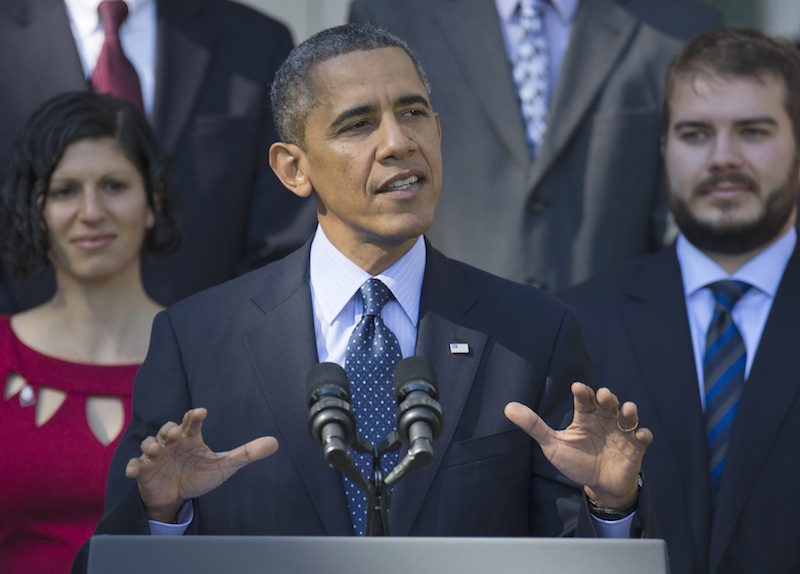The Obama administration gave new life Monday to the idea of working with insurance companies to help them sign people up for health coverage outside of the troubled federal website, HealthCare.gov.
“We are working to set up direct enrollment through insurance companies so that Americans could choose to enroll directly through the insurance company,” White House Press Secretary Jay Carney said during a daily press briefing after reporters asked about the possibility. “We’re interested in engaging or opening as many channels for enrollment as possible.”
That makes sense on one hand because the administration wants to enroll as many people as possible — but on the other hand, it comes through the sacrifice of the competitive nature of the online marketplace, where insurers were supposed to vie for consumers’ business. That was a big part of President Obama’s pitch prior to the Oct. 1 launch.
“It’s a website where you can compare and purchase affordable health insurance plans, side-by-side, the same way you shop for a plane ticket on Kayak, the same way you shop for a TV on Amazon. You just go on and you start looking, and here are all the options,” he said on Sept. 26. “Now you’ve got new competition, because insurers want your business. And that means you will have cheaper prices.”
But after HealthCare.gov’s struggles since its launch, losing that feature for some people might be a price that Obamacare supporters have to accept.
“In terms of overcoming these initial glitches, I think this is fine,” Jonathan Gruber, an MIT economist who helped craft the law, told TPM. “We’re transforming the way health insurance is shopped. If it takes an extra few months, it’s not the end of the world. We can’t let the perfect be the enemy of the good here.”
Consumers who are eligible for federal tax credits to help pay for health insurance must use the marketplaces to sign up for them. That remains unchanged, according to a White House official, but for people who won’t qualify for federal subsidies, going directly to the insurance companies could be a way around HealthCare.gov.
This isn’t a new idea — an April blog post from Health Affairs noted that it was a possibility based on federal guidance — but Carney’s comments elevated it again in the public sphere after the website’s disastrous launch.
“If you don’t want subsidies, you could always enroll through (insurers), and if you do, you can’t,” the White House official told TPM in an email. “Though we are looking for ways to ramp up enrollment efforts and make it easier for them.”
Carney himself indicated that the website’s problems have forced the administration to search for alternative means of signing people up, and direct enrollment through insurers is one of the avenues being pursued.
“It’s the end here that matters, not necessarily the means,” he said. “We have to make sure that there are other means available for the American people, even as we make improvements to the website.”
But the problem is that one of the primary functions of the marketplaces is offering consumers a place where they can compare different plans from different insurers. That opportunity is eliminated with direct enrollment.
“It does undercut the idea of competition and choice,” said Tim Jost, a law professor at Washington and Lee. He did note, though, that the insurers should be required to notify people that they have other options, even if they don’t have to show them what they are.
So what gives? Obamacare supporters such as Gruber and Jost have a theory. Yes, HealthCare.gov was supposed to act as a competitive marketplace. But it’s also crucial to make sure that people can sign up for coverage. The expansion of health insurance was the reason Obamacare was passed in the first place.
Given the problems that HealthCare.gov has been experiencing, the White House seems to be making the value judgment that it’s now more important to give people another avenue for enrolling — and making sure that they know it’s there — even if they must sacrifice the marketplace’s competitive advantage for some people.
“They need all hands on deck to get people enrolled, and I’m sure that the insurers are going to be more than happy to do it once they can,” Jost said. “They want to make it clear to people that we’re trying to do everything we can, and this is one option.”






